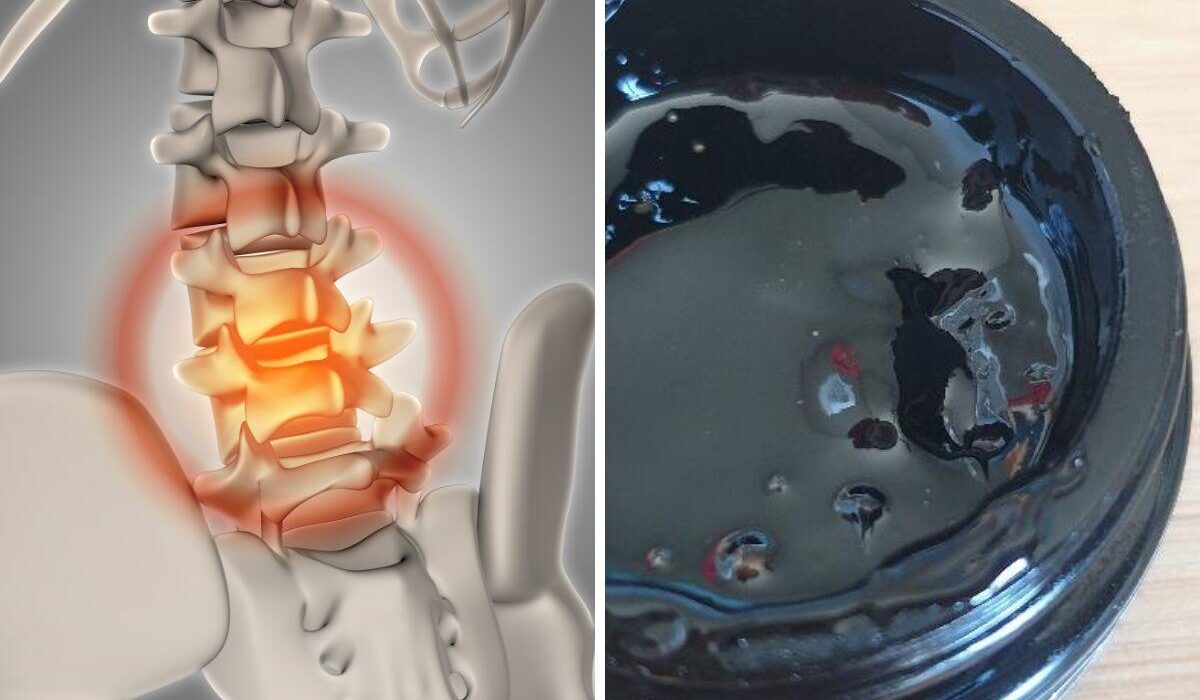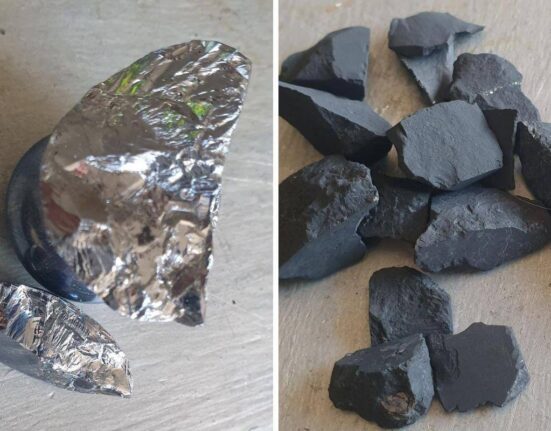Sciatica pain can be a debilitating condition, affecting the quality of life for many individuals. In the search for natural pain relief, shilajit, a sticky substance found primarily in the rocks of the Himalayas, has emerged as a potential ally. This guide delves into the ways high-quality shilajit may offer relief to those suffering from sciatica nerve pain.
Key Takeaways:
- High-quality shilajit contains fulvic acid and other bioactive compounds that may alleviate sciatica pain.
- Shilajit’s anti-inflammatory and analgesic properties can be beneficial for nerve pain management.
- Regular supplementation with shilajit, alongside a healthy lifestyle, may contribute to overall nerve health and pain reduction.

Understanding Sciatica and Nerve Pain
Sciatica pain is a symptom of an underlying condition that affects the sciatic nerve, which runs from the lower back down to the legs.

The causes of sciatica pain vary, including herniated discs, spinal stenosis, and piriformis syndrome, among others.
The complexity of sciatica pain requires a multifaceted approach to treatment. While conventional medicine often turns to painkillers and surgery, many individuals seek natural pain relief methods. This is where the potential of shilajit health benefits comes into play, offering a complementary approach to managing nerve pain.
The Potency of Shilajit in Natural Pain Relief
Shilajit is a natural resin-like substance that has been used in traditional medicine for centuries. It is rich in fulvic acid, a potent antioxidant, and contains over 84 minerals, offering a wide range of health benefits.

Research suggests that the bioactive compounds in shilajit can help reduce inflammation, a key factor in sciatica pain. Additionally, its analgesic effects may help alleviate the intensity of nerve pain, providing a natural form of pain relief. High-quality shilajit, free from contaminants and processed with care, ensures the maximum efficacy of these properties.
Shilajit Health Benefits Beyond Pain Relief
- Shilajit has adaptogenic properties that can help the body manage stress, which is often a contributing factor to nerve pain.

- Regular intake of shilajit supports immune system function, crucial for maintaining health and preventing complications that could worsen sciatica pain.
- Shilajit enhances the body’s resilience and promotes balance, making it a valuable addition to a holistic approach to managing sciatica.
Incorporating Shilajit into Your Sciatica Pain Management Plan
Integrating shilajit into a sciatica pain management regimen should be done thoughtfully and ideally under the guidance of a natural healthcare professional.
The recommended dosage of shilajit varies, but starting with a small amount the size of a pea and gradually increasing it can help the body adjust to its effects.
It is also essential to source high-quality shilajit to avoid impurities and ensure potency.
We use and recommend using an ultra pure shijalit. We use this one:
When using shilajit for nerve pain, consistency is key. Regular supplementation, combined with other lifestyle modifications such as exercise, proper ergonomics, and a balanced diet, can enhance the potential benefits of shilajit for sciatica pain relief.
Precautions and Considerations for Shilajit Use
As with any supplement, there are precautions to consider when using shilajit for sciatica pain. Individuals with certain health conditions, such as gout or iron overload, should consult with a healthcare provider before taking shilajit.
Additionally, it is important to ensure that the shilajit product chosen is pure and has been tested for heavy metals and other contaminants. Usually, low priced shijalit is not pure.

Pregnant or breastfeeding women, as well as individuals on medication, should also seek medical advice before incorporating shilajit into their routine.
Monitoring the body’s response to shilajit and adjusting the dosage as necessary can help mitigate any potential adverse effects.
Summary for Using Shijalit for Sciatica Pain Relief
High-quality shilajit presents a promising natural remedy for those grappling with sciatica nerve pain.

Individuals suffering from sciatica pain may find a natural ally in shilajit that supports their journey towards relief and recovery.
FAQ Section
Q: How does shilajit help with sciatica nerve pain?
A: Shilajit contains fulvic acid and other bioactive compounds that have anti-inflammatory and analgesic properties. These can help reduce inflammation around the sciatic nerve and alleviate pain, offering natural pain relief for those suffering from sciatica.
Q: Are there any side effects of taking shilajit for sciatica pain?
A: While shilajit is generally considered safe, it may cause side effects in some individuals, especially if taken in excessive amounts or if the product is of low quality. Possible side effects include allergic reactions, increased uric acid levels, or interactions with certain medications. It’s important to consult with a healthcare provider before starting shilajit supplementation.
Q: How should I take shilajit for the best results in managing sciatica pain?
A: Shilajit should be taken according to the recommended dosage, often starting with a small amount and gradually increasing it. It should be part of a comprehensive pain management plan that includes exercise, proper ergonomics, and a balanced diet. Always ensure you are using a high-quality shilajit product and consult with a healthcare professional for personalized advice.
Sources and additional reading
These research pieces provide insights into the potential anti-inflammatory properties of shilajit, which may contribute to its effectiveness in alleviating sciatica pain.
- “In vitro assessment of cytotoxicity and anti-inflammatory properties of shilajit nutraceutical: A preliminary study” – This study examines the cytotoxicity and anti-inflammatory properties of shilajit. It highlights the presence of fulvic acid, a biologically active compound known for its anti-inflammatory propertes.
- “Review on shilajit used in traditional Indian medicine” – This review discusses the traditional usage of shilajit in Indian medicine and notes its in vivo antioxidant activity. While shilajit lacks scientific evaluation and systematic documentation, it shows potential as an anti-inflammatory substance.
- “Shilajit: a review” – This review explores the anti-inflammatory activity of shilajit in acute, subacute, and chronic inflammation models. It emphasizes the need for further research to substantiate the claims surrounding shilajit and its bioactive constituents.
- “Alcoholic Extract of Shilajit as Anti Protein Denaturation, Anti Blood Hemolysis, and Anti Microbial” – This study highlights the anti-inflammatory effects of shilajit, including the inhibition of denaturation and hemolysis. It indicates the potential of shilajit as an anti-inflammatory agent.
The links used on thewellthieone.com are affiliate links, which may provide a small commission. This does not increase the price of the goods for the consumer whatsoever. What it does is ensure that useful content like this can continue to be produced. Thank-you for enjoying our content and allowing us to continue to provide more.








